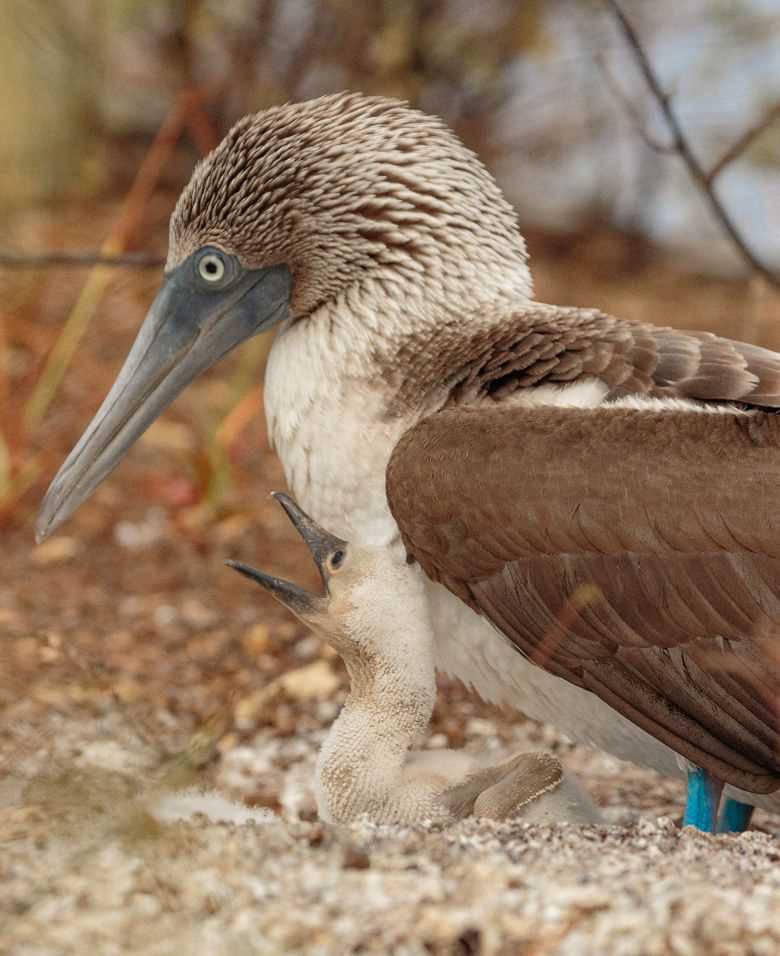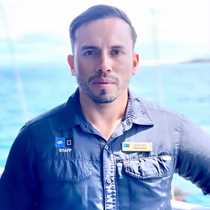We started our day with a wet landing on Cormorant Point, which holds a brackish water lagoon fed by filtration of ocean water and small amount of precipitation. We were lucky to spot a few American flamingos feeding on brine shrimp and small crustaceans around the shallow waters of the lagoon. Some other migratory shore birds were seen, such as black-necked stilts and least sandpipers.
Along the hike, some of us had the opportunity to photograph some of the well-known Darwin finches, yellow warblers, and other ground birds.
After our pre-breakfast hike, we went deep water snorkeling along the coast of Champion Islet to have the opportunity to enjoy playful sea lion pups in the water with us, a large school of yellow-tailed razor surgeonfish, and a large variety of colorful fish.
Some of us chose to go on outings in the glass-bottom boat to learn about the natural history of the underwater world of the Galapagos archipelago.
During the afternoon activity, we visited the oldest mailing system in the Americas. Post Office Bay was our visitor site. We learned about the human history of Floreana, where early buccaneers and pirates frequented the island in search of giant tortoises and fresh water. We followed the postal tradition, which started in the 1790s to drop letters (and today, postcards) at the post office barrel located on Floreana Island.
After the visit to the post office barrel, we went kayaking along the coast of Post Office Bay in search of some birds, sea lions, and sea turtles within the calm bay. Other guests had the opportunity to swim along the beach or do some wildlife photography along the sandy area of Post Office Bay.
Floreana was certainly an incredible island to visit. Not only did we explore the natural habitat of endemic species, but also had the opportunity to learn about the human history of the Galapagos archipelago.







